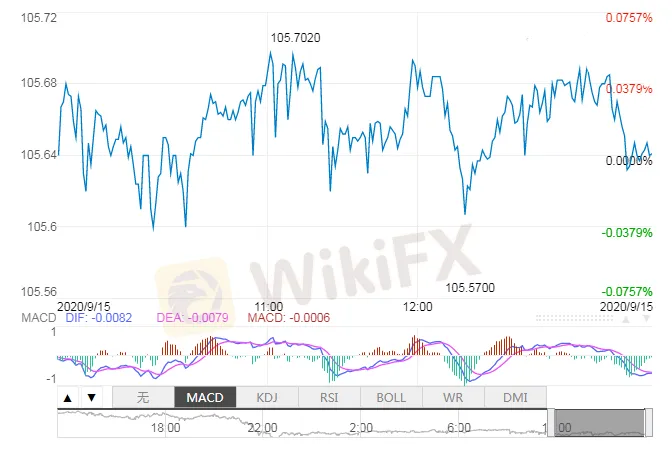简体中文
繁體中文
English
Pусский
日本語
ภาษาไทย
Tiếng Việt
Bahasa Indonesia
Español
हिन्दी
Filippiiniläinen
Français
Deutsch
Português
Türkçe
한국어
العربية
USD/JPY Remains Weak
Abstract:According to a research of the United Overseas Bank (UOB) released on September 1, USD/JPY tends to be bearish till the end of the year.
WikiFX News (3 Oct.) - According to a research of the United Overseas Bank (UOB) released on September 1, USD/JPY tends to be bearish till the end of the year.
With Japan introducing a policy of low interest rate, the Japanese yen has become one of the world's most traded currencies due to the attractive carry trades. Previously, the country's central bank attempted to turn deflation into inflation by enlarging the asset purchase, which increases the currency supply and weakens the currency value. Consequently, it boosted exports but lifted import costs as well, especially the commodity price.
Besides the monetary policies of the FED and the Bank of Japan, the risk-on tilt is also an important factor affecting the price of USD/JPY. As a traditional safe haven and a funding currency with a low-interest rate, JPY will obtain support from both flights to safety and financing repayments once risky assets become less alluring amid the worsening market sentiment. On the contrary, the support for the yen will contract if the market is steady.
Shinzo Abe's resignation is an accident for the yen, which highlights its hedging value, said an analyst of the UOB. Meanwhile, the central bank is expected to hold the policy outlook unchanged because of the Liberal Democratic Party's secured power.
The analyst added that the price of USD/JYP would keep weak considering the overall pressure on the dollar. With that said, the pair is expected to decline further to 104 in Q4 while targeting 104 in Q1 & Q2 next year.
All the above is provided by WikiFX, a platform world-renowned for foreign exchange information. For details, please download the WikiFX App: bit.ly/WIKIFX

Chart: Trend of USD/JPY
Disclaimer:
The views in this article only represent the author's personal views, and do not constitute investment advice on this platform. This platform does not guarantee the accuracy, completeness and timeliness of the information in the article, and will not be liable for any loss caused by the use of or reliance on the information in the article.
Read more

Japanese Yen Outlook: USD/JPY, EUR/JPY & GBP/JPY
The yen weakens further as Fed Chair Powell's cautious remarks influence market sentiment. USD/JPY remains around 161, with resistance at 162, driven by Powell's comments and upcoming US CPI data. June's lower-than-expected PPI in Japan adds pressure on the yen. The sentiment is bullish for USD/JPY, supported by strong US economic indicators. Key influences include Federal Reserve signals, US economic data, and Japan's PPI. Potential movement for USD/JPY could see it testing 162 resistance.

Today's analysis: Gold Prices Maintain Strength Amid Mixed Economic Signals
The U.S. ISM Manufacturing PMI dropped to 48.5 in June, below expectations, but the dollar rebounded after a Supreme Court ruling in favor of Trump. Investors await U.S. job data for hints on potential Federal Reserve rate cuts. Despite rising U.S. bond yields, gold remains strong near $2300. If it breaks above the 50-day moving average of $2337, it could reach $2390-$2400, but faces resistance at $2339.21. A drop below $2323.29 would weaken the bullish signal; watch for a breakout in the $2291.

Japanese Yen Outlook: USD/JPY, EUR/JPY & GBP/JPY
The yen continues to weaken against major currencies, with USD/JPY potentially climbing above 165. Japan's officials express concerns, hinting at potential intervention. Stable domestic indicators fail to support the yen amid robust USD performance.

USDJPY Predicted to Rise on Yen Depreciation
The USD/JPY pair is predicted to increase based on both fundamental and technical analyses. Fundamental factors include a potential easing of aggressive bond buying by the Bank of Japan (BoJ), which could lead to yen depreciation. Technical indicators suggest a continuing uptrend, with the possibility of a correction once the price reaches the 157.7 to 160 range.
WikiFX Broker
Latest News
CWG Markets Got FSCA, South Africa Authorisation
Amazon launches Temu and Shein rival with \crazy low\ prices
CySEC Warns Against Unauthorized Investment Firms in Cyprus
JUST Finance and UBX Launch Multi-Currency Stablecoin Exchange
XM Revamps Website with Sleek Design and App Focus
TradingView & Mexico’s Uni. Partnership, to Enhance Financial Education
Something You Need to Know About SogoTrade
Global Shift in Cryptocurrency Taxation: Italy and Denmark Chart New Paths
Webull Introduces 24/5 Overnight Trading to Extend U.S. Market Access
eToro Launches Global-Edge Smart Portfolio: A Balanced Approach to Growth and Stability
Currency Calculator


